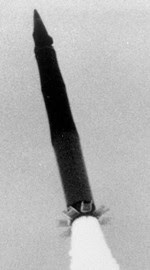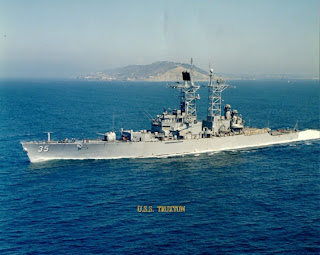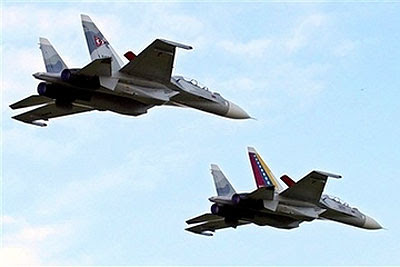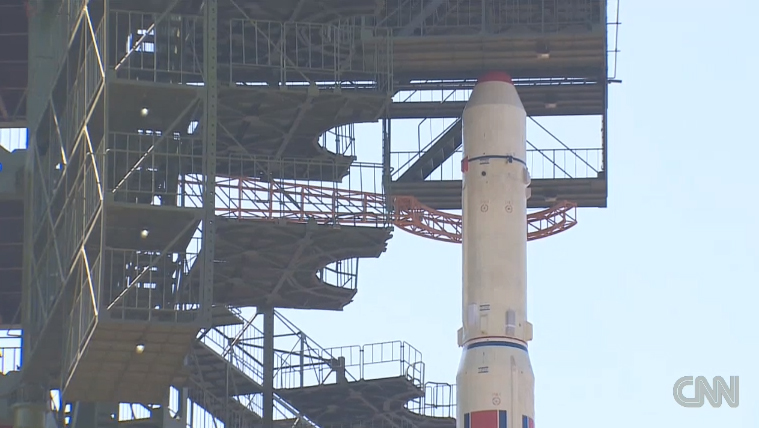I continue to be amazed (though I really shouldn’t by now) at the volume of email that is generated over the course of a generic three-day weekend. This past weekend was no exception to that rule either – especially as the miserly mailbox sizes set by the sysadmins is, well, miserly, one must spend the first part of the day shoveling them out (one is doubly blessed with multiple mailboxes of varying classification…). On to today’s news
Russia
 Russia evidently was successful in the test launch of a new version of the SS-27/Topol M
Russia evidently was successful in the test launch of a new version of the SS-27/Topol M ICBM (called the RS-24 in reports) today (unlike, say, their new SLBM, the
Bulava…) and of course, President Putin takes the opportunity to thump his chest again over how it demonstrated “new” technologies to enable it to overcome the US BMDS. Newsflash Vladimir – the BMDS was never designed as a counter to Russian ICBMs. That goes for the planned European leg as well. Rather, it was designed to counter the missiles from countries like North Korea, which, by the way, uses Soviet/Russian proliferated designs and technologies…
By the way, you might also want to consult your First Deputy Prime Minister, Sergei Ivanov on that matter of MRBM/IRBM proliferation. Seems he was quite upset that here we are, 20 years after the signing of the INF Treaty (which he now claims is just a relic of the Cold War) and there are all manner of countries on their border that now possess these missiles. Of course, the Cold War relic prevents the US and Russia from possessing these weapons, so one might wonder what the next logical step would be.
A rational thought might be a regional missile defense network since, frankly, some of those countries (with proliferated Russian designs and technology – sometimes you do need a sharp stick to make a point) view Russia as a not too lesser Satan than the Great Satan and Russia may find itself the subject of an attack from the south. Of course, the only exoatmospheric option open to Russia at that point is the nuclear-based system around Moscow, with all the attendant fallout and collateral damage effects a 1-megaton exoatmospheric explosion would impart.
If participation in a regional defense plan doesn’t stir your oars, why not work to extend the INF treaty to third parties? Granted there would be some considerable obstacles to overcome, not the least of which would be seeking to bring notoriously uncooperative states (like North Korea) to the table and others like China or France who would object based on the possibility of losing their national deterrent forces because their ranges fall in the construct of the INF Treaty. If linked in a larger condominium with a revitalization of the strategic arms talks between the US and Russia, there may be some possibilities. Alas, though, it is easier to throw rocks (including MIRVed ones), so one shouldn’t expect much more than rhetoric, one supposes.
30 May Update: Here is Poland’s Deputy Foreign Minister’s take on yesterday’s events:
Poland’s top negotiator on planned U.S. missile defense bases in Europe said Tuesday that Russia has revealed a psychological problem in its opposition to the plan, and said Warsaw will ask U.S. President George W. Bush how seriously to take Moscow’s threats. … “The Russians absolutely know that 10 missiles which are not equipped with any kind of warhead cannot do any harm against Russian military might,†Witold Waszczykowski, the deputy foreign minister and top Polish negotiator, said in an interview with The Associated Press. “From a technical point of view, we cannot convince them. They ignore, they neglect our arguments, and they are saying that any kind of a military installation on the territory of Poland, Czech Republic – that means on the territory of new member NATO states – is not acceptable for them,†Waszczykowski said. “That means they have a psychological problem, a kind of mental problem preventing them from accepting that the two nations are really sovereign – are not part of Soviet or Russian domination any more.†…
… works for me… – SJS
US
Speaking of the BMDS (and after the Midway postings, we will be back to the Missile Defense 101 series), there was a non-test this past Friday of the Ground-Based Mid-Course Interceptor (or GBI). What constitutes a non test? When the target missile fails to achieve a trajectory that in turn triggers the BMDS, identifying it as a threat and thereby not launching the GBI, that is a non-test event. The target missile was a re-worked Polaris SLBM with a generic warhead that contains telemetry and artifacts for the GBI test. The Polaris is used (as were old Minuteman upper stages) due to their availability after being withdrawn from service and consideration of disposal. This is permitted under the applicable treaties. The problem is – it is a 40 yr old missile and certain elements cannot be overhauled, that is the risk you run using missiles that are past their prime. It is however, a cost saving measure – when they work. Unfortunately, because of the cost, availability and time in preparation, there cannot be another sitting on the pad to launch in the event of the primary’s failure, similar to what is done with drone targets used for endoatmospheric missile tests by aircraft and ships. One should expect the test to be rescheduled probably later in the summer or in the fall when a new target is available.
On the Navy side, there will be another Truxtun in the fleet again:
The Navy will christen the newest Arleigh Burke class guided-missile destroyer, Truxtun, Saturday, June 2, 2007, during a 10 a.m. CDT ceremony at Northrop Grumman Ship Systems, Pascagoula, Miss.
Designated hull number DDG 103, the new destroyer honors Commodore Thomas Truxtun (1755-1822) who embarked upon a seafaring career at age 12.When the U.S. Navy was organized, he was selected as one of its first six captains on June 4, 1798. He was assigned command of the USS Constellation, one of the new frigates, and he put to sea to prosecute the undeclared naval war with revolutionary France.On Feb. 9, 1799, Truxtun scored the first of his two most famous victories. After an hour’s fight, Constellation battered the French warship L’Insurgente into submission in one of the most illustrious battles of the quasi-war with France.Truxtun retired from the Navy as a commodore and has had five previous ships carry his name: a brig launched in 1842, a destroyer with the hull number DD 14, a destroyer with the hull number DD 229, a high speed transport with the hull number APD 98 (initially designated a destroyer escort with the hull number DE 282), and a nuclear-powered frigate (DLGN) later re-designated a cruiser with the hull number CGN 35.

To refresh memories, here’s the last Truxton
China
Lost in the churn of a three day weekend and other events, was the release of the “2007 Military Power of the People’s Republic of China” report. The entire PDF version of the report is available for reading/download at:
http://www.defenselink.mil/pubs/pdfs/070523-China-Military-Power-final.pdf
While there is a considerable amount to digest there, one of the areas worth perusing is the missile development, especially that of the DF-31. Pg. 5 notes that DoD assess it reached initial threat availability (ITA) in 2006. There is an interesting analysis of the DF-31 and the ITA issue over at
Arms Control Wonk that merits your close attention – there are some pretty valid reasons for taking issue with the ITA declaration.
Venezuela
That paragon of freedom loving socialists ’round the world, Hugo (don’t call me Hew-go) Chavez shut down the last private TV station this weekend, declaring it supported ‘the oligarchy,’ an alleged rich, pro-US group which threatens to overthrow Chavez’s government. Judging from the reaction in the streets, it isn’t the rich oligarchs (and how many can there be left in the new Socialist Paradise?) but the average populace and students that he ought to be concerned with. Then again, maybe they will just provide the target rich environment that will allow Hugo to employ his latest acquisition:

 Russia evidently was successful in the test launch of a new version of the SS-27/Topol M ICBM (called the RS-24 in reports) today (unlike, say, their new SLBM, the Bulava…) and of course, President Putin takes the opportunity to thump his chest again over how it demonstrated “new” technologies to enable it to overcome the US BMDS. Newsflash Vladimir – the BMDS was never designed as a counter to Russian ICBMs. That goes for the planned European leg as well. Rather, it was designed to counter the missiles from countries like North Korea, which, by the way, uses Soviet/Russian proliferated designs and technologies…
Russia evidently was successful in the test launch of a new version of the SS-27/Topol M ICBM (called the RS-24 in reports) today (unlike, say, their new SLBM, the Bulava…) and of course, President Putin takes the opportunity to thump his chest again over how it demonstrated “new” technologies to enable it to overcome the US BMDS. Newsflash Vladimir – the BMDS was never designed as a counter to Russian ICBMs. That goes for the planned European leg as well. Rather, it was designed to counter the missiles from countries like North Korea, which, by the way, uses Soviet/Russian proliferated designs and technologies…




One Comment
Comments are closed.